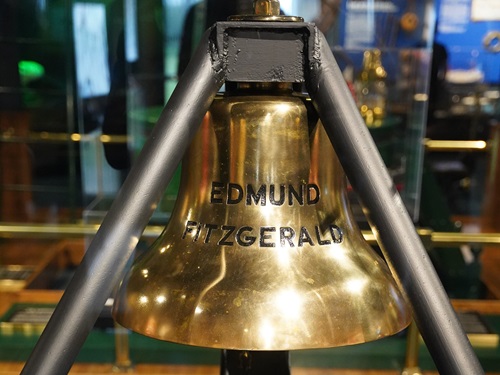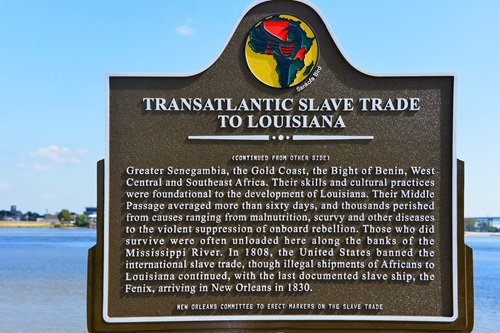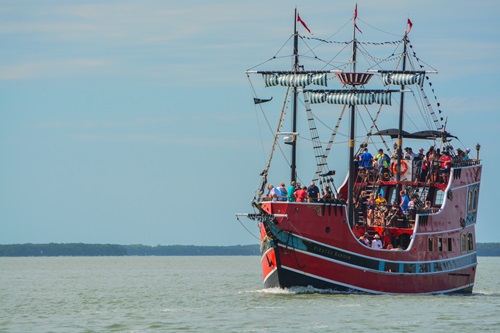
The Titanic remains one of the most fascinating (and well-publicized) shipwrecks of all time. Photo © Meunierd | Dreamstime.com
While nobody – and that means nobody at all – is likely to want to make the descent to the wreck of the Titanic, the fascination continues with the world below the waves.
Now, a traveling museum exhibition is keeping alive the fascination with the Titanic – and it is likely to boost tourism in other coastal sports destinations that count diving and wrecks (oh, and pirate tourism too) among their attractions.
According to Blooloop, Experiential Media Group (E/M Group), a company that creates traveling exhibitions and experiences, and RMS Titanic, Inc. (RMST), the salvor in possession and steward of the Titanic wreck site, have announced that TITANIC: The Artifact Exhibition returned to Jersey City, New Jersey, after 10 years.

The exhibit opened on February 17 and is currently housed in the Liberty Science Center, a 300,000-square-foot venue in Liberty State Park on the waterfront near the Statue of Liberty.
E/M Group operates permanent Titanic exhibitions in Las Vegas and Orlando, and a virtual exhibition at www.titanic.live) and noted the attraction has been popular with visitors worldwide.
And while not every destination will host the Titanic exhibit, many can benefit from the increased interest in diving and underwater exploration that are sure to follow as publicity continues to buzz.
Event owners hosting tournaments should know there are often opportunities for the public to take advantage of tourism opportunities offered – snorkel and SCUBA lessons – as well as information on the many dive spots – or even hiking or other day trips to view wrecks from a nearby shore. And setting up something in advance, then promoting it well, can result in an extra revenue stream as well as more economic impact for the destination being visited.
While an enormous number of states have wrecks – and many are able to be seen by the public (yes, even in landlocked states like Arizona), some dive sites are more spectacular than others. Additionally, diving and snorkeling provide opportunities to learn about marine life, conservation and even water and boating safety.
In South Carolina, an enormous part of the Outer Banks’ identity comes from its reputation as the Graveyard of the Atlantic, with its dangerous shoals and frequently rough waters contributing to more than 5,000 ships sunk in that area since the 1500s – the most recent being 2012 during Hurricane Sandy. The area around Cape Hatteras alone is home to more than 600 wrecks. Many of those wrecks are easily visible, with some in the dry sand of the beaches.
On the opposite side of the country lies the Graveyard of the Pacific, a stretch of the coastal region in the Pacific Northwest, from Tillamook Bay on the Oregon Coast northward to Cape Scott Provincial Park on Vancouver Island. The unpredictable weather conditions and coast characteristics have caused more than 2,000 shipwrecks in the area.

A growing aspect of wreck diving is that of exploring, and paying respect to, the individuals who died in, and who are entombed in, slave ships that capsized, killing hundreds of individuals on board at a time. Diving With A Purpose (DWP), the organization that trains divers to find and conserve such wreck, was profiled in National Geographic.
“When you are African American and you’re diving on a slave ship, that’s a whole lot different from somebody else doing it,” legendary diver Albert José Jones, a co-founder of the National Association of Black Scuba Divers and board member of DWP, told the NatGeo staff. “Every time you go down, you realize basically two things: One is that maybe your ancestors were on the ship. The other thing you realize is that you have a history. Your history didn’t start on the shores of the United States. It didn’t start with slavery. Your history started [in] Africa at the beginning of time, the beginning of civilization.”
It is an emotional journey for many. One group of divers, having found a slave ship wreck off the coast of South Africa, traveled to the area across from Mozambique Island where the passengers on the ship had been taken captive. They were warmly welcomed by the community but, said Lonnie Bunch, III, one of the elders had a special request.
“He said that his ancestors have asked that when I go back to South Africa … if I could sprinkle the soil over the side of the wreck, so for the first time since 1794, [his] people can sleep in their own land,” said Lonnie Bunch III. “I lost it,” he adds. “I’m crying … I’m just thinking about the contradictions, the beauty that surrounds me, the fact that I’m a historian, but this is about how living people feel and think.”
The team returned to South Africa and carried out the request. “We stood for a moment,” said Bunch. “And I think there’s one point where we just stood and embraced. And just let the waves hit us and wash us,” one said. “I couldn’t speak at all. And tears started flowing down all three of our eyes.”
Shipwrecks evoke strong feelings. The wreck of the Edmund Fitzgerald (made famous by the Gordon Lightfoot song of the same name) captivated the imagination of the world in the 1970s. The wreck is still below the waves; however, some artifacts can be found in the Great Lakes Shipwreck Museum in Paradise, Michigan.
According to the museum’s website, “The legend of the Edmund Fitzgerald remains the most mysterious and controversial of all shipwreck tales heard around the Great Lakes. Her story is surpassed in books, film and media only by that of the Titanic.

The Edmund Fitzgerald was lost with her entire crew of 29 men on Lake Superior on November 10, 1975, 17 miles north-northwest of Whitefish Point, Michigan. Whitefish Point is the site of the Whitefish Point Light Station and Great Lakes Shipwreck Museum. The Great Lakes Shipwreck Historical Society (GLSHS) has conducted three underwater expeditions to the wreck, 1989, 1994 and 1995.
Fitzgerald’s 200-pound bronze bell was recovered on July 4, 1995, and remains on display at the museum. Images and videos of the wreck can be found on the website as well. In November, a memorial service was held; find a recording of it here.
Another revenue stream is that of pirate tourism. The Outer Banks, for example, have no shortage of ties to Edward Teach (a.k.a. Blackbeard) and there are numerous tours and options for those who are interested. Other destinations, including (but not limited to) Galveston and Rhode Island, attract pirate enthusiasts. In fact, Panama City Beach has a whole weekend devoted to it.
A number of cities also offer pirate tours, or themed cruises, on retrofitted ships with costumed staff who entertain passengers during voyages. One example is Urban Pirates, setting sail from Baltimore's Inner Harbor; however, there are plenty of others as well.

Event owners and rights holders interested in taking advantage of the ongoing fascination with wrecks, pirates and other attractions should be ready to help bump up interest in applicable destinations:
- Make outreach to CVBs and sports commissions to learn about opportunities existing in the area; it may be that wrecks exist or that artifacts can be found in local museums, or that pirate lore is plentiful
- Work with vendors or tour companies in the area to craft excursions that would appeal to the demographic being entertained in the event. Be sensitive to those with specific interests.
- Publicize events – remind people that it’s a limited opportunity; wrecks (and artifacts in general) are subject to the forces of nature and are rapidly disintegrating.
- Remind tourists about the ecological factors in diving and snorkeling, and the impact sightseeing can have not just on wrecks but on the environment as a whole
- Use the side event to add media interest to the tournament or sports event
Another benefit of the increased attention on submersibles may be growth of swimming, boating, SUP, fishing and other water-related sports. Savvy event owners should be ready to harness the enthusiasm and help those interested get their feet wet.

